Ana G. Armada
CmWave and Sub-THz: Key Radio Enablers and Complementary Spectrum for 6G
Jun 26, 2024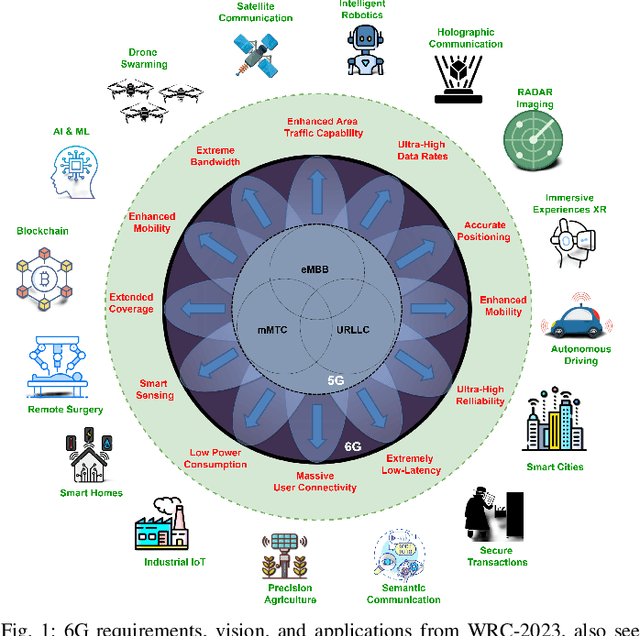

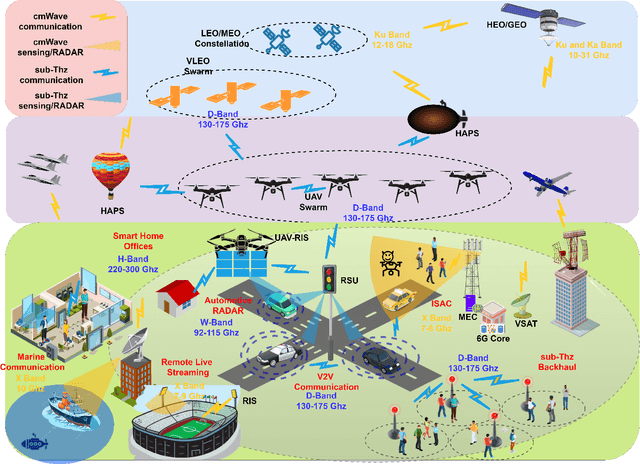
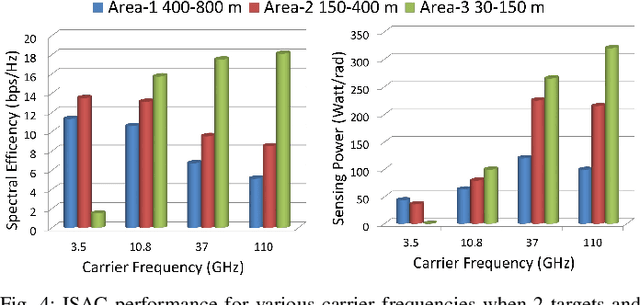
Abstract:Sixth-generation (6G) networks are poised to revolutionize communication by exploring alternative spectrum options, aiming to capitalize on strengths while mitigating limitations in current fifth-generation (5G) spectrum. This paper explores the potential opportunities and emerging trends for cmWave and sub-THz spectra as key radio enablers. This paper poses and answers three key questions regarding motivation of additional spectrum to explore the strategic implementation and benefits of cmWave and sub-THz spectra. Also, we show using case studies how these complementary spectrum bands will enable new applications in 6G, such as integrated sensing and communication (ISAC), re-configurable intelligent surfaces (RIS) and non-terrestrial networks (NTN). Numerical simulations reveal that the ISAC performance of cmWave and sub-THz spectra outperforms that of existing 5G spectrum, including sub-6 GHz and mmWave. Additionally, we illustrate the effective interplay between RIS and NTN to counteract the effects of high attenuation at sub-THz frequencies. Finally, ongoing standardization endeavors, challenges and promising directions are elucidated for these complementary spectrum bands.
Performance Analysis of RIS-Based nT-FSO Link Over G-G Turbulence With Pointing Errors
Feb 06, 2021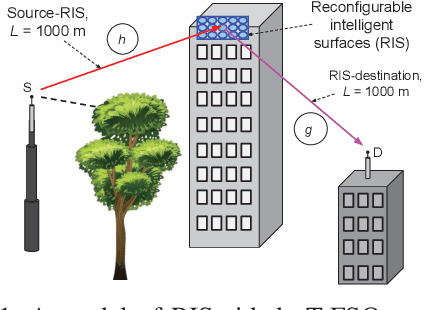
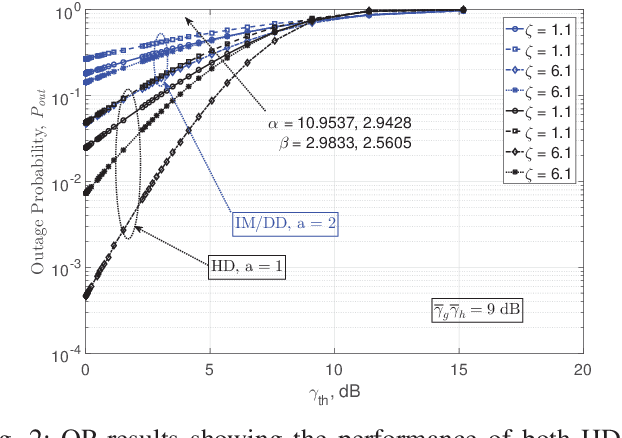
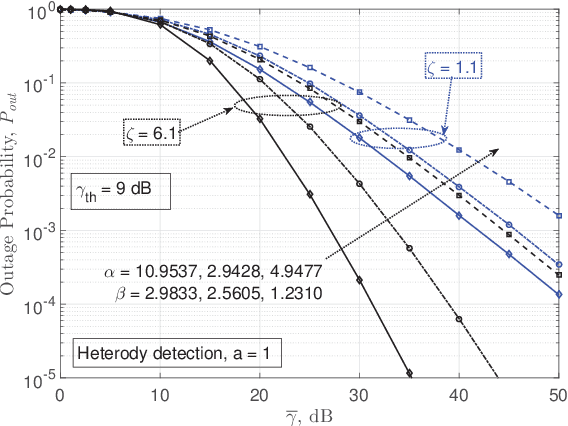
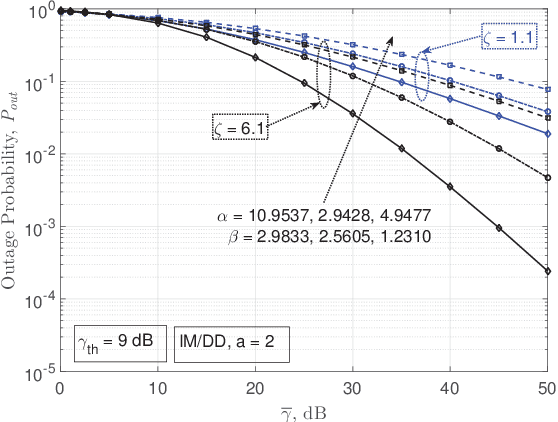
Abstract:One of the main problems faced by communication systems is the presence of skip-zones in the targeted areas. With the deployment of the fifth-generation mobile network, solutions are proposed to solve the signal loss due to obstruction by buildings, mountains, and atmospheric or weather conditions. Among these solutions, re-configurable intelligent surfaces (RIS), which are newly proposed modules, may be exploited to reflect the incident signal in the direction of dead zones, increase communication coverage, and make the channel smarter and controllable. In this paper, we tackle the skip-zone problem in near-terrestrial free-space optical (nT-FSO) systems using RIS. We carry out a performance analysis of RIS-aided nT-FSO links affected by turbulence and pointing errors, for both heterodyne detection (HD) and intensity modulation-direct detection (IM/DD) techniques. Turbulence is modeled using the Gamma-Gamma (G-G) distribution. We analyze the model and provide exact closed-form expressions of the probability density function, cumulative distribution function, and moment generating function of the end-to-end signal-to-noise ratio, $\gamma$. Capitalizing on these statistics, we evaluate the system performance through the outage probability, $ P_{out} $, ergodic channel capacity, $\overline{C}$, and average bit-error-rate, $\overline{P}_b$, for selected binary modulation schemes. Numerical results obtained for different turbulence levels and pointing errors confirm that the HD technique outperforms IM/DD even in RIS-aided nT-FSO systems. These results also show that using a blue color offers better channel capacity and communication performance compared to red and green colors.
 Add to Chrome
Add to Chrome Add to Firefox
Add to Firefox Add to Edge
Add to Edge